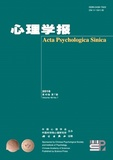Reward-based learning plays an important role in selective attention. Recent studies have indicated that rewarded stimuli capture more attention after participants directly learned the association between the stimulus and reward, either presented as money or as social feedback. In addition to engaging in direct learning, people can acquire knowledge of stimuli by observing others, and how to interact with and respond to external stimuli. To adapt to our social world, it is critical to gain reputation information by observing whether people interact with each other positively or negatively. However, it remains unclear whether the valence of social actions influences the attentional priority of valence-associated stimuli. Therefore, the present study employed a widely used training-testing paradigm to investigate the influence of the valence of social actions on attentional capture.
Three experiments were conducted. In Experiment 1, the distractors in the actor’s color associated with positive (i.e., helping actions) or negative (i.e., hindering actions) valence of social actions were shown in a visual search task. We examined whether the attentional capture effect was influenced by the valence of social actions and whether the effects were different between positive and negative social actions. In Experiment 2, we investigated whether the attentional capture effect of the recipient’s color was influenced by the valence of social actions as well. To further examine the attentional priority between two individuals’ features involved in the negative social interaction, we directly compared the attentional capture effect between the actor’s color and the recipient’s color from the negative social interaction (i.e., hindering action) in Experiment 3. In the learning phase, participants were required to watch cartoonized videos adapted from Hamlin, Wynn, and Bloom (2007). In these videos, an actor interacted with a recipient in one of four different modes: valid helping (the actor helps the recipient successfully), invalid helping (the actor repeats the same action as helping but without effects on the recipient), valid hindering (the actor hinders the recipient successfully), and invalid hindering (the actor repeats the same action as hindering but without effects on the recipient). In this case, the valid helping action was more positive than invalid helping action in valence, but with the same action pattern, and the valid hindering action was more negative than invalid hindering action in valence, but with the same action pattern. During the testing phase, each trial started with the presentation of the fixation display (400~600 ms), which was followed immediately by the search display (1500 ms or until response). In the search display, the target was defined as the form singleton (e.g., one diamond among circles), while a distractor was a color singleton (additional-singleton) colored the same as the agent in the previously learned videos. Inside the target, a white line segment was oriented either vertically or horizontally, and inside each of the nontargets, a white line segment was tilted at 45° to the left or to the right. The search display was followed by a feedback display (1000 ms), which informed participants whether their responses in the previous trial were correct.
In the training phase, participants were able to successfully learn the association between agents’ color and their interaction information through observation, and the memory performance was not modulated by the interaction mode. However, in the test phase, the results showed that (1) In both Experiments 1 and 2, participants’ reaction time in the search display was longer when the additional-singleton distractors were shown than when none of the additional-singleton distractor were shown, which was referred to as a significant standard additional-singleton effect, suggesting that attention was captured by the additional-singleton distractor; (2) the attentional capture effect was significant when the additional-singleton distractor was associated with the valid hindering condition than when the additional-singleton distractor was associated with the invalid hindering condition, while no difference in the attentional capture effect was observed between valid and invalid helping conditions; (3) whether the additional-singleton distractor’s color was from the actor or the recipient involved in the negative social interaction, the attentional capture effect was present, but the additional-singleton distractor’s color associated with the actor showed a larger attentional capture effect than that associated with the recipient.
Hence, our results demonstrate that the valence of social actions influences attentional capture, and this influence is shown as a negative bias for valence-associated stimuli. In addition, this association is established on all agents involved in the social action, instead of the actor alone, and the actor’s features in the negative social interaction are prioritized to be attended than the recipient. These findings highlight how attention is related to social actions, suggesting an adapted function of negative social actions.




